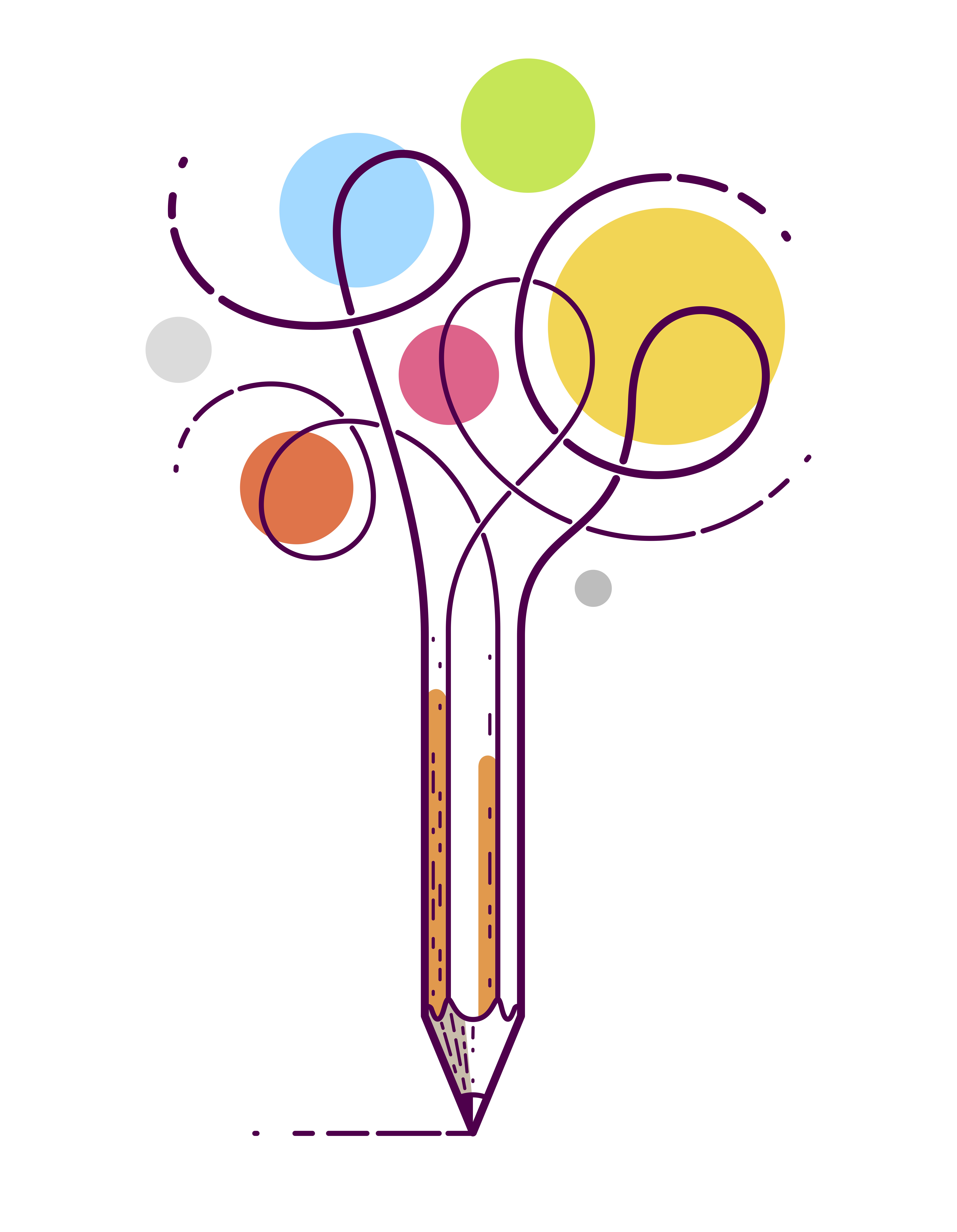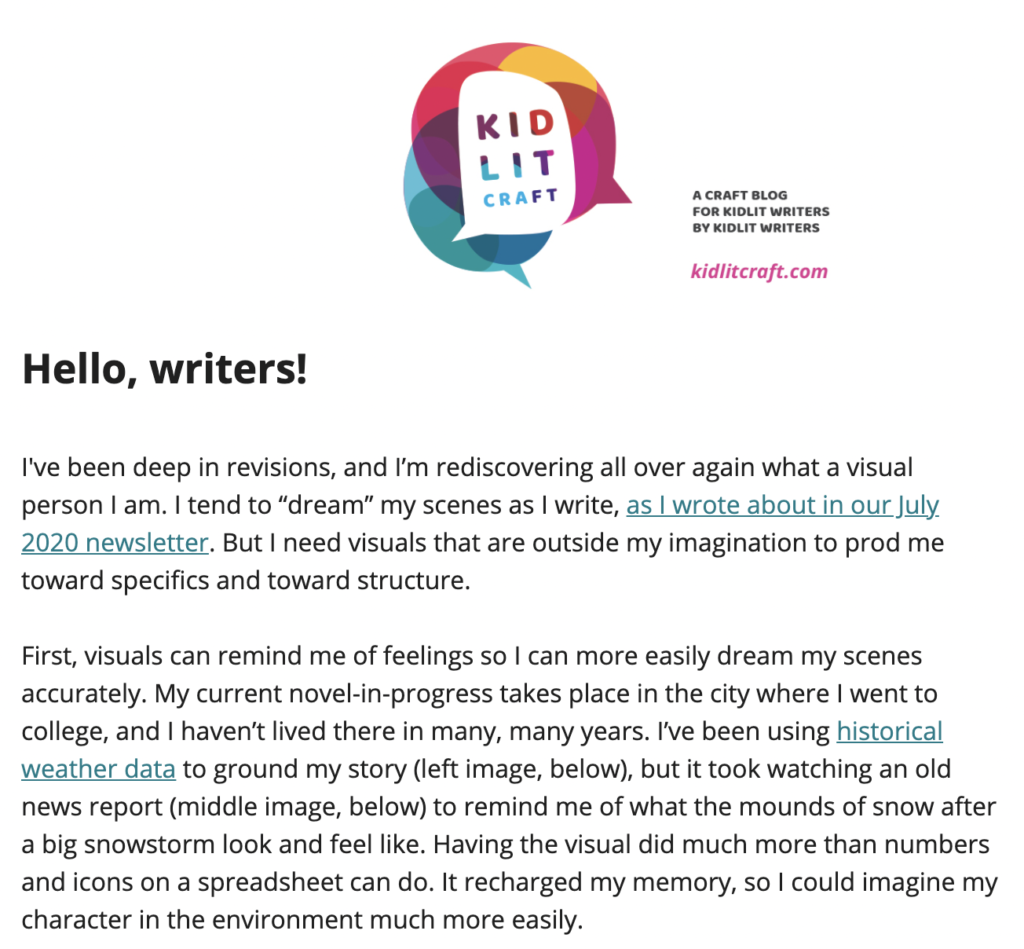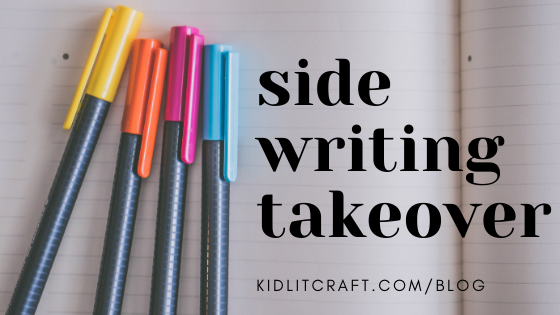We are so happy to welcome Erin Nuttall to the KidLit Craft team! Erin and I first met at Vermont College of Fine Arts, Writing for Children and Young Adults, as across-the-hall roommates. She’s a master of humor, complex webs of character relationships, and finding ways for characters to work together to solve problems. And she hates sidewriting. So what better way for her to begin her tenure at KidLit Craft than hosting our Sidewriting Takeover month! But I’ll let her tell you more about it. Welcome, Erin! –Anne-Marie
Edited to add: We had such a great month of sidewriting! We created a quick list of all the sidewriting exercises recommended by our authors. You can click on the heading of the exercise to read the author’s full interview. For our introduction to sidewriting–read on!
If you’re a writer then you likely have feelings about sidewriting. You know, all that extra writing you do (or wonder if you should do) in order to figure out and enhance your story. Sidewriting can be anything from doing a story spine to free form writing to letters from your characters to hand writing a scene to word associations to writing from a new POV to plot graphs to–well, you get the idea. Sidewriting is any writing you do that (generally) doesn’t go into your actual manuscript.
Why sidewriting?
For some, sidewriting is a joy. It’s an opportunity to dig deep into character, to dive into the nitty-gritty emotions, and to work out structure kinks or plot holes. It’s the way to figure out the driving force behind their stories, the emotional throughlines of each character, and even the story arc.
For me, sidewriting has always been a chore. An eye-rolling, skip-when-possible, grump-through bare-minimum when required, chore. It’s right up there with role-playing–torture plain and simple. It’s not that my words are so precious, so beautiful, so perfect that I don’t want to waste a single one on writing that isn’t going to be in the final product. Nope. I’m pretty ruthless when it comes to cutting and revising. But sidewriting has always been just that–something that you do in addition to your real writing.

Of course, I want to get to the emotional heart of my characters. I want three-dimensional characters who have hopes and dreams and pasts that connect with readers. And I want engrossing plots and clear desire lines. But for many years I doubted that sidewriting would get me there. I didn’t see it as anything more than a time suck. My time to write is limited and precious, stolen from everything else I’m supposed to be doing and everyone else I should be taking care of. I couldn’t justify taking that time to write words that weren’t going to go into my manuscript.
And yet. I kept coming up against the wall of two-dimensional characters. I was laboring to get to the heart of what made them tick. I’d hit a wall of plotting frustrations because not knowing what my characters would do in a situation meant I struggled to know what should happen next. Until finally I realized that the writing might go faster if I did some sidewriting to underpin the draft.
Finding what works for you
A big part of my problem was that none of the sidewriting exercises I’d encountered had resonated with me. They frequently felt too woo-woo and not practical, and I’m a form-follows-function kind of gal. I’ve recently discovered several practical ways to use sidewriting to dig deep into character, emotions, and pasts. If you, like me, feel like gagging at the idea of having your character (or worse, your character’s therapist) write a letter to you about…well, about anything, read on. Or, if you’re already a sidewriting devotee, we’ve got something for you too.
In hopes of helping you to find sidewriting exercises that will work for you, we’ve scheduled a sidewriting blitz during the month of April. We’ll be hearing from different writers to get their take on what works for them. Each will also offer a side writing exercise for you to try out, see if it will get your creative juices flowing, and help you strengthen your manuscript.
Getting Started
I’m going to kick us off by sharing a book that started me thinking that sidewriting might have more to offer more than I thought. Donald Maass’ Writing the Breakout Novel Workbook is a how-to manual with lots of helpful explanations and many exercises that push you to delve deeper into why your character is doing things. Maass uses examples to demonstrate what he’s talking about but, when I’m pressed for time, I skip the explanations (I’m sure you’re surprised) and go straight to the exercises. Best of all, all of the exercises are set up to go directly into your manuscript. No wasted words!
If you’re feeling really brave, you can try a sidewriting exercise that has helped jump-start scenes in my WIP.

- Pick an emotion you’d like to explore in a scene. It could be anything: hurt, excitement, loss, joy, panic, jealousy, confidence, security, optimism, disgust, gratitude. You get the idea.
- If you have multiple POVs, decide which character will be the POV in your scene. Don’t worry about secondary characters, they’ll show up if they need to.
- Brainstorm your emotion. I like the web kind that can break off into branches as one idea gives way to others, but suit yourself. Set a timer for 3 minutes and just let the ideas flow freely.
- Once your timer goes off, take a look at what you have. Look for kernels that can lead to a scene. Sometimes they will be in the same family of ideas and sometimes they will be as disparate as coconuts and peanut butter.
- Set a timer for seven minutes and write that scene.
That’s it. Ten minutes. I won’t guarantee your scene will make it into your final draft, but if you’re writing about an emotion that’s crucial to your story, there’s a good chance that it will.
We want to hear from you!
Thanks for embarking on this sidewriting adventure with us this month! Please comment and let me know what your favorite sidewriting exercise is. Or let me know how you became converted to sidewriting, or if the jury’s still out for you. Find us on Twitter @kidlitcraft, using the hashtag #sidewriting. I hope we can have an exciting and productive month together.
Happy sidewriting,
Erin
We’ve created a round-up of all the exercises recommended by the authors we interviewed. You’ll find a full description of each exercises. Click the link in each heading to read the author’s full interview.
We featured Writing the Breakout Novel Workbook in our first ever KidLit Craft Newsletter. We send a newsletter once a month highlighting a featured author, a craft book recommendation, and writing inspiration. You can get it in your inbox by subscribing!
Check out our most recent newsletter here!

Erin Nuttall holds an MFA in Writing for Children and Young Adults from Vermont College of Fine Arts and is an active member of SCBWI and ALAN. She lives outside of Chicago with her family where she writes stories for middle grade and young adult readers that offer a humorous take on friendship, identity, feminism, and romance.



[…] Sidewriting Takeover: Why Sidewrite? (And What Is It Anyway?) […]